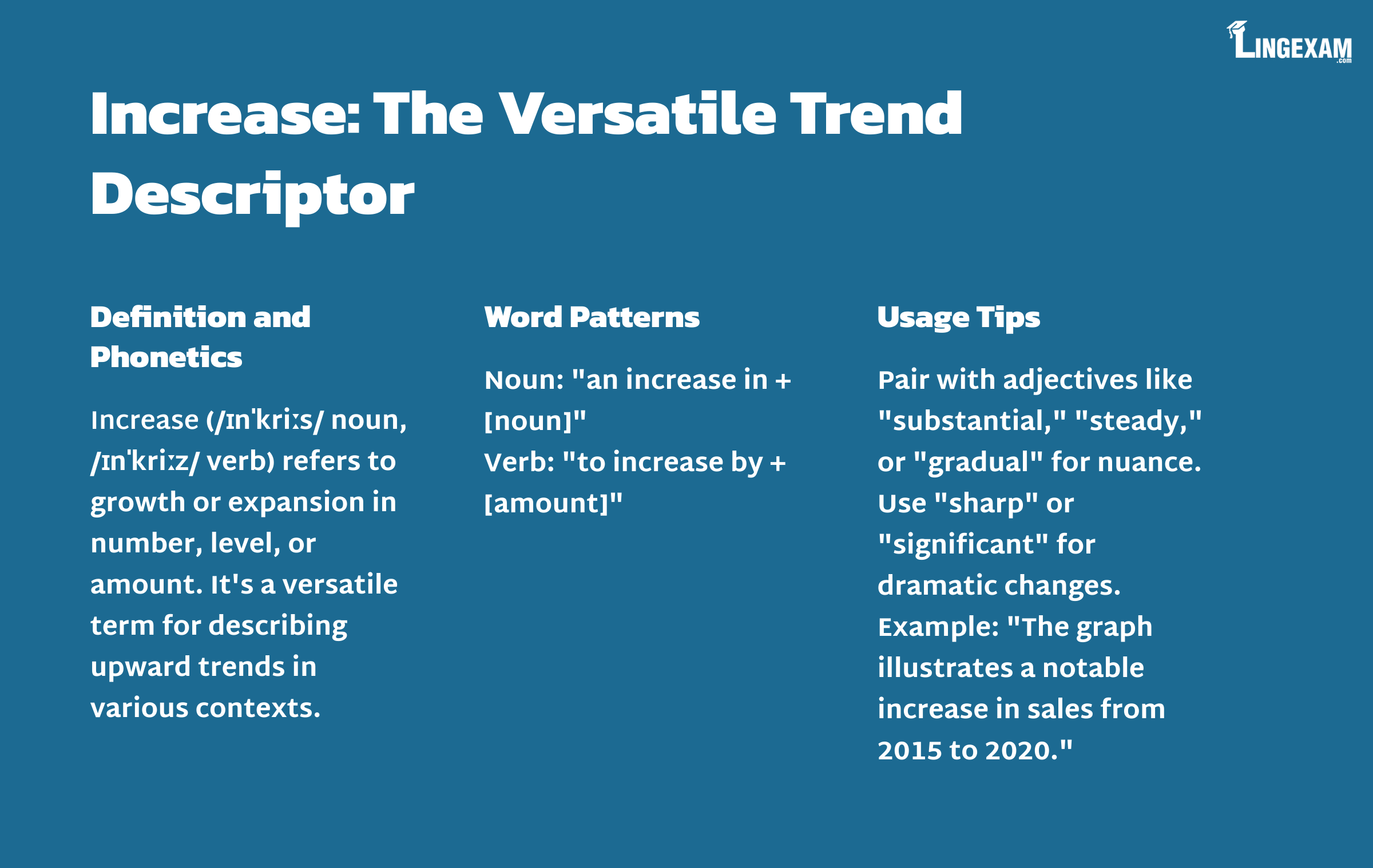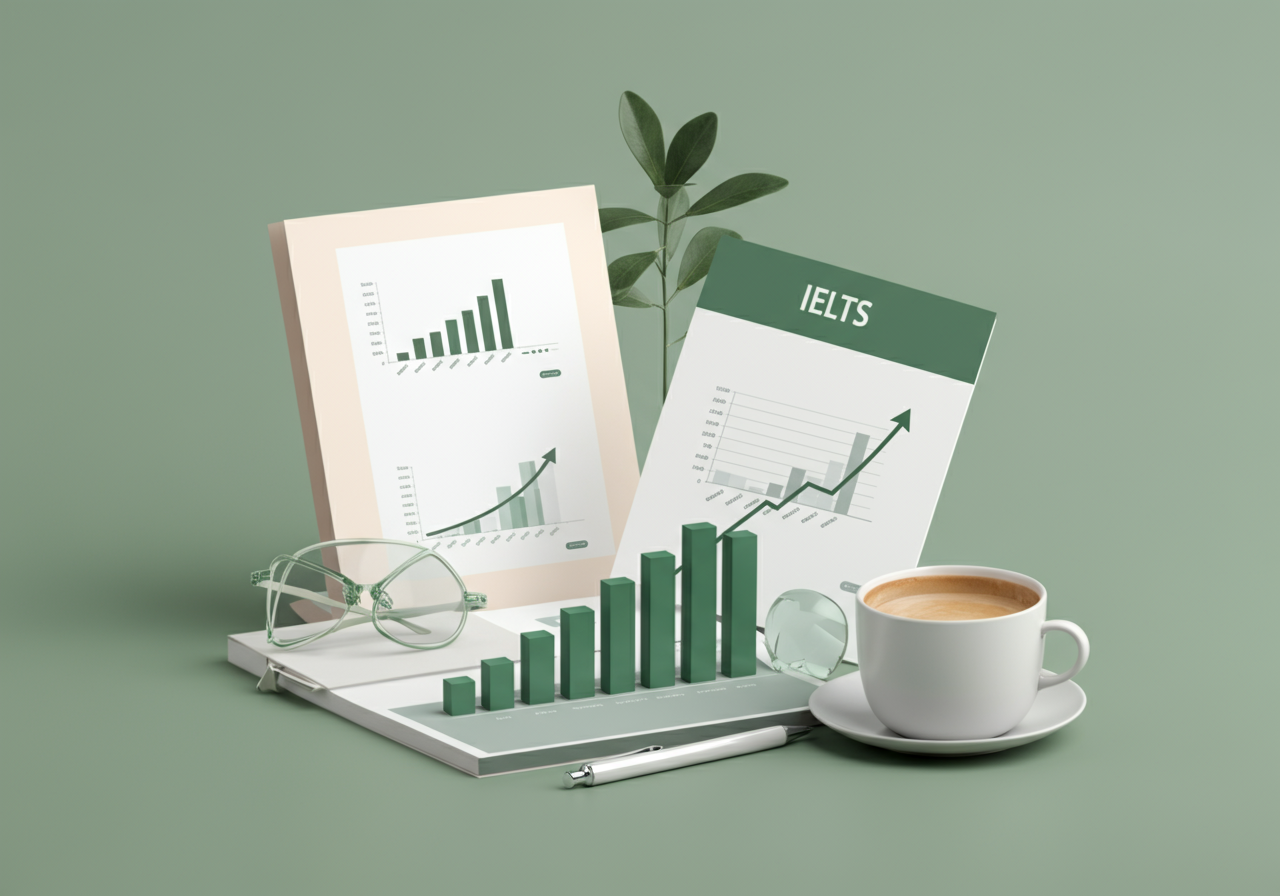

Mastering Vocabulary for Describing Trends in IELTS Academic Writing Task 1
Describing trends in graphs, tables, and charts is an essential skill for IELTS Academic Writing Task 1. This guide provides advanced vocabulary for discussing upward trends, designed to help college-level learners and aspiring linguists express data changes with clarity and sophistication.

Increase
-
Phonetics: /ɪnˈkriːs/ (noun), /ɪnˈkriːz/ (verb)
-
Part of Speech: Noun/Verb
-
Definition: Refers to growth or expansion in number, level, or amount.
-
Word Patterns:
-
[noun]: “an increase in + [noun]”
-
[verb]: “to increase by + [amount]”
-
-
Example: “The graph illustrates a notable increase in sales from 2015 to 2020.”
-
Usage: This term is ideal for describing upward trends. The verb often pairs with “by” to indicate magnitude (e.g., “increase by 10%”) or “to” to specify the new value (e.g., “increase to 50 units”). Adjectives such as “substantial,” “steady,” or “gradual” provide nuance, while dramatic changes may call for “sharp” or “significant.”
Rise
-
Phonetics: /raɪz/
-
Part of Speech: Noun/Verb
-
Definition: Denotes upward movement or an increase in quantity or value.
-
Word Patterns:
-
[noun]: “a rise of + [amount]”
-
[verb]: “to rise by + [amount]”
-
-
Example: “A steady rise in global temperatures has been observed over the last decade.”
-
Usage: Similar to “increase,” but slightly more formal. This term works well for describing gradual or noticeable growth. Use modifiers like “gradual,” “marked,” or “considerable” to add precision. Combining it with time phrases (e.g., “over five years”) enhances clarity.
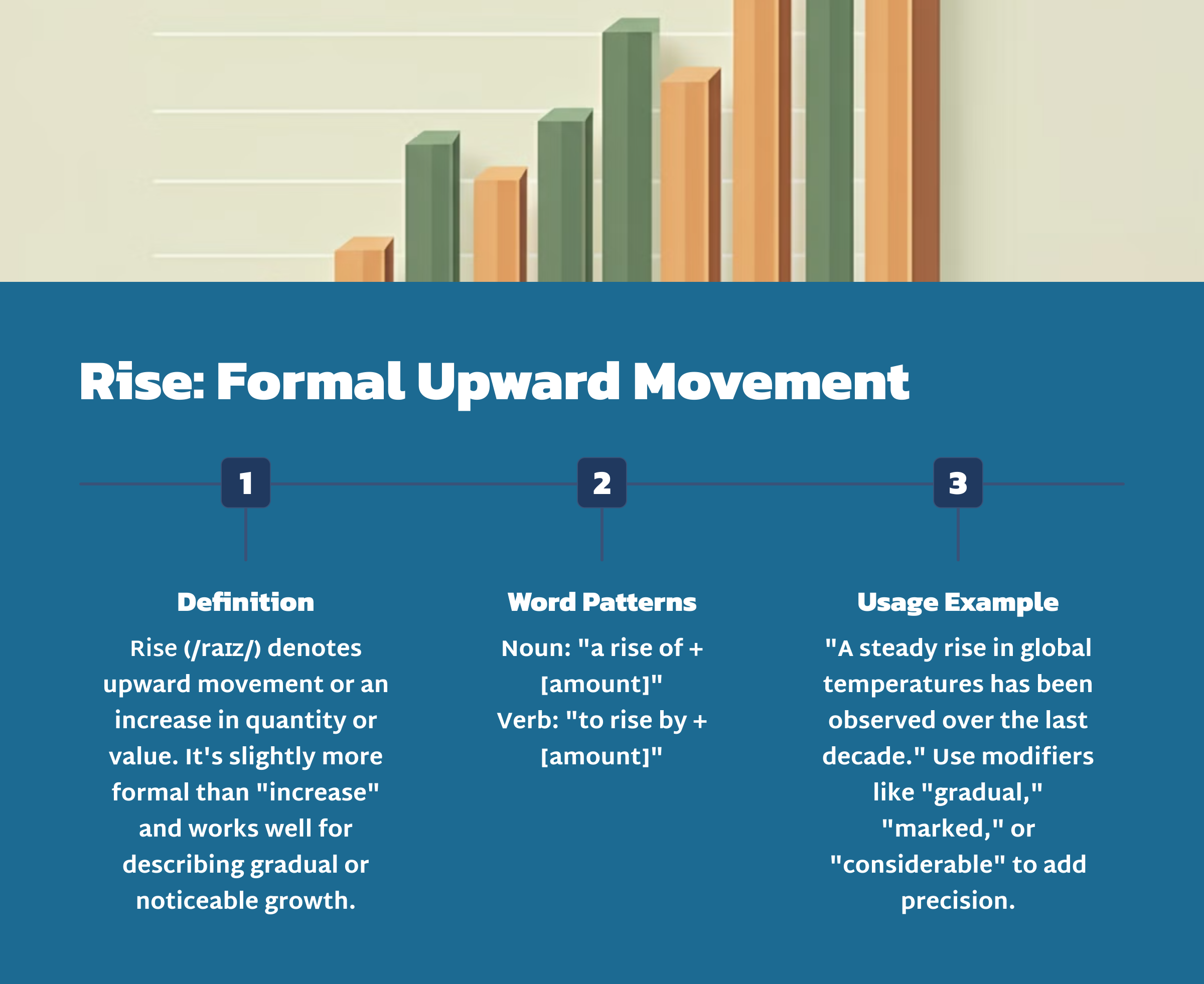
Climb
-
Phonetics: /klaɪm/
-
Part of Speech: Noun/Verb
-
Definition: Suggests consistent or progressive upward movement.
-
Word Patterns:
-
[noun]: “a steady climb in + [noun]”
-
[verb]: “to climb to + [level]”
-
-
Example: “The company’s revenue climbed to £10 million in the final quarter.”
-
Usage: This term emphasizes sustained increases, often with a positive connotation. “Climb” is effective for describing slow but consistent trends and pairs well with qualifiers like “steady,” “remarkable,” or “persistent.”
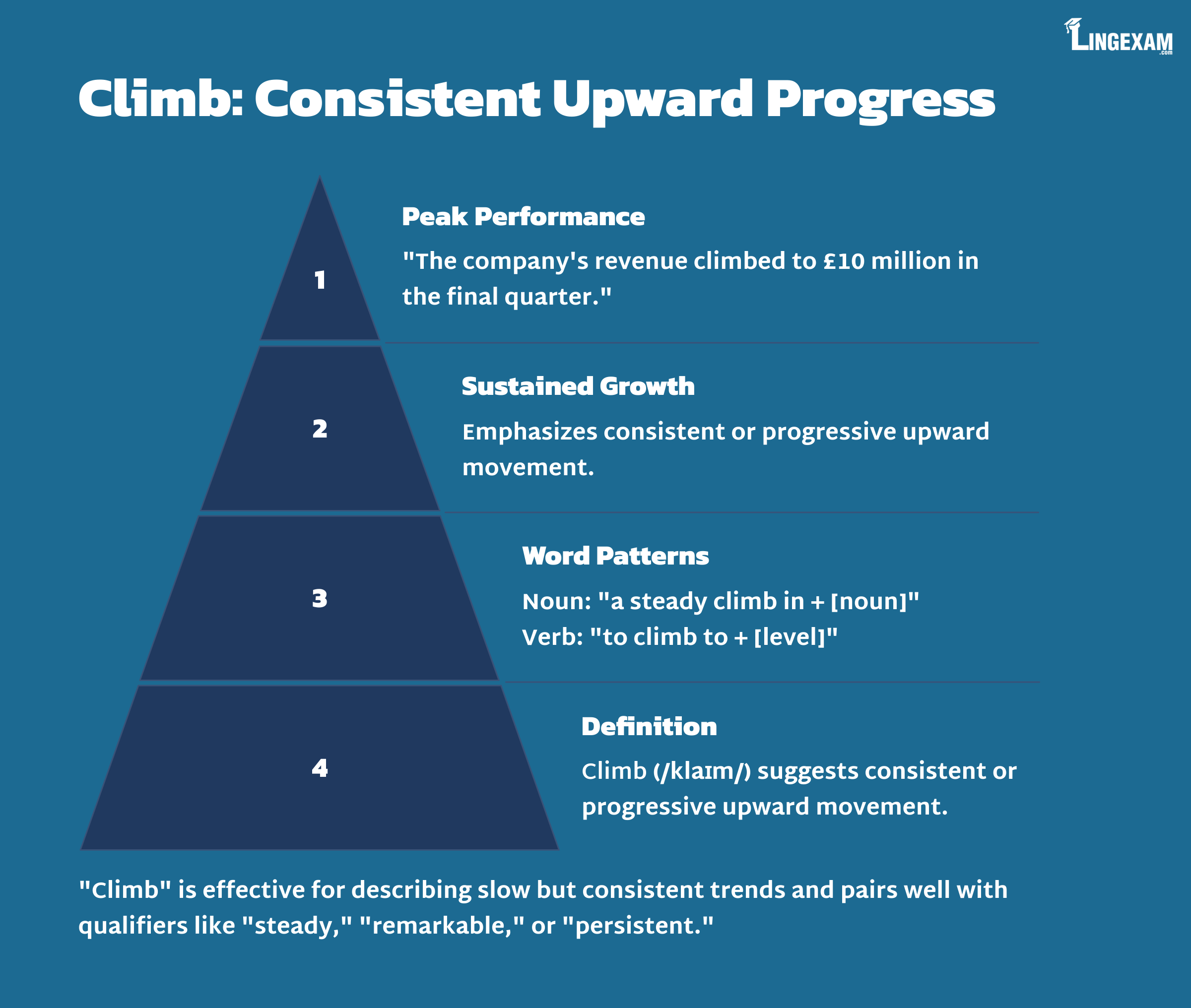
Soar
-
Phonetics: /sɔː(r)/
-
Part of Speech: Verb
-
Definition: Highlights a rapid and dramatic increase to a high level.
-
Word Patterns: “to soar to + [level]”
-
Example: “Unemployment rates soared to 15% within just two months.”
-
Usage: “Soar” is perfect for describing sudden, large-scale increases. It conveys urgency and magnitude, making it ideal for sharp or extreme growth. Intensifiers like “dramatically,” “rapidly,” or “exponentially” enhance its impact.
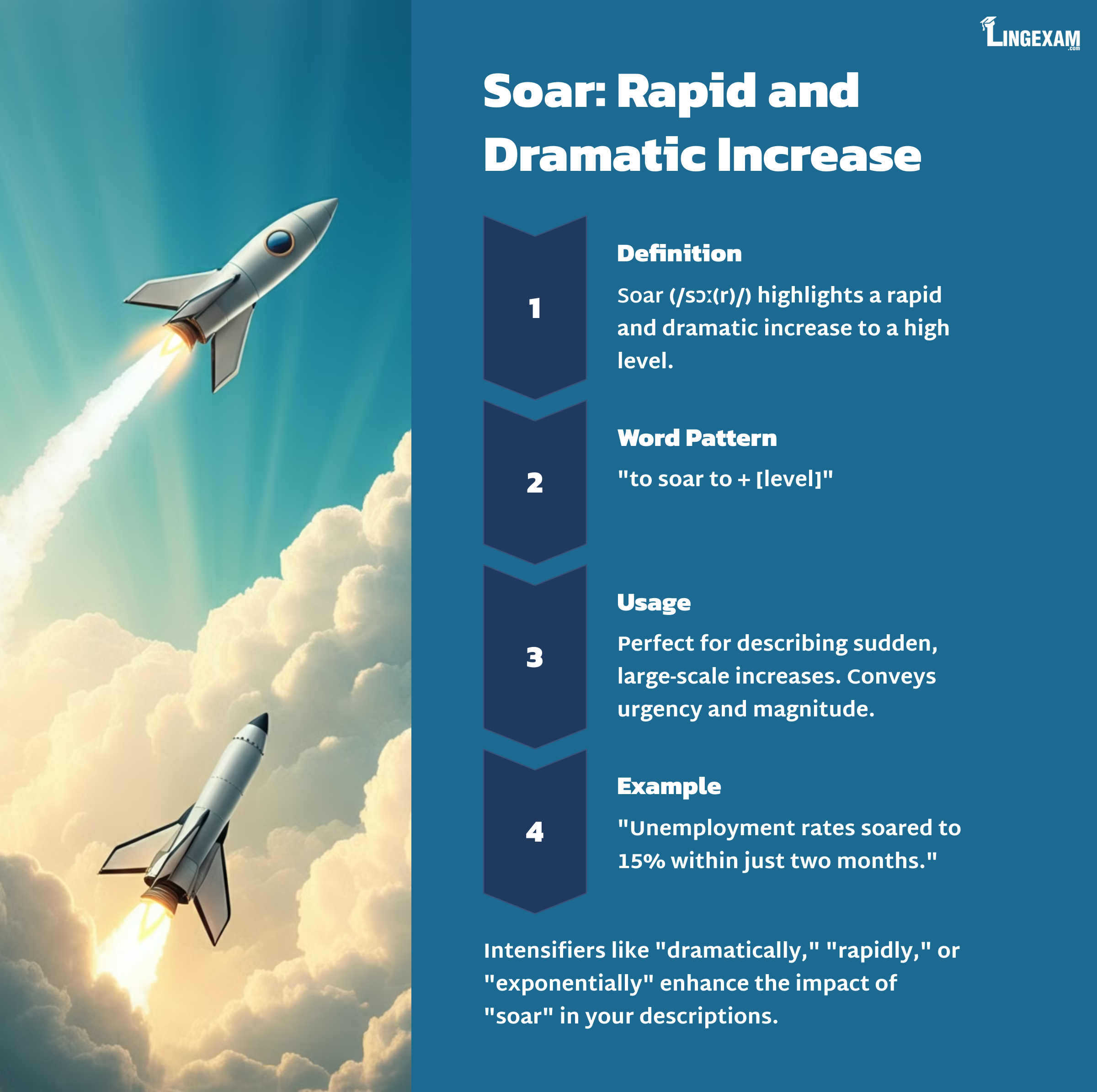
Surge
-
Phonetics: /sɜːdʒ/
-
Part of Speech: Noun/Verb
-
Definition: Indicates a large and sudden upward movement.
-
Word Patterns:
-
[noun]: “a surge in + [noun]”
-
[verb]: “to surge by + [amount]”
-
-
Example: “Energy demand surged by 50% during the winter months.”
-
Usage: “Surge” effectively describes unexpected or dramatic spikes, particularly in contexts like financial markets, energy use, or technological adoption. Adjectives such as “massive,” “unprecedented,” or “unexpected” often accompany this term to emphasize scale and impact.

By mastering these terms, you can articulate trends in data with precision and depth. This vocabulary not only enhances your IELTS Writing Task 1 responses but also prepares you for academic and professional scenarios where data interpretation is crucial. Practice integrating these expressions with relevant modifiers, time markers, and comparative structures to achieve a polished and professional tone.
Tags:
You May Also Like
- Sep 20, 2022
- IELTS
Sign up to receive our latest updates
Get in touch
Address

